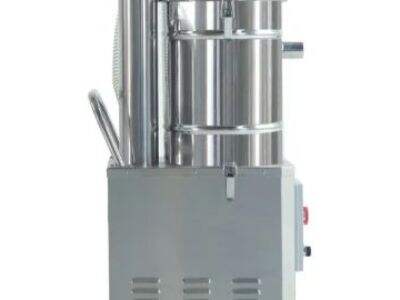Gdy chodzi o mieszanie przemysłowe, ważna jest properci kosza. Zbyt mały kosz może nie pomieścić wszystkich materiałów potrzebnych do dużego wsadu. Jeśli kosz będzie zbyt duży, mieszanina może się nie połączyć odpowiednio. Poprawny wybór rozmiaru kosza jest tutaj kluczowy dla właściwego mieszania.
Sprawy do uwagi przy wyznaczaniu rozmiaru kosza dla twojego mieszalnika
Oto kilka spraw, które należy mieć na uwadze podczas wybierania odpowiedniego rozmiaru kosza dla twojego przemysłowego v mieszanka : Po pierwsze, rozważ, ile każdego ze składników będziesz miksował. Jeśli generujesz dużo materiału, będziesz potrzebował większego kosza. Rozważ również rodzaje materiałów, które mieszasz, oraz sposób ich wprowadzania do i usuwania z kosza. Niektóre materiały mogą wymagać większego kosza lub innego kształtu dla efektywnego mieszania.
Wpływ rozmiaru kosza na efektywność mieszania i produkcyjną efektywność
Rozmiar zbiornika dla twojego komercyjnego blendera może znacząco wpłynąć na to, jak dobrze będzie mieszadło działać oraz na ilość wyjściowego produktu. Zbyt mały zbiornik może wymagać częstego przerywania pracy w celu ponownego ładowania składników, co zwalnia proces i hamuje produktywność. Jeśli użyjesz zbiornika, który jest zbyt duży, materiały mogą się nie połączyć odpowiednio. Wybierając odpowiedni rozmiar zbiornika, możesz poprawić proces mieszania i zwiększyć produktywność oraz jakość mieszania.
Inne rozmiary, które możesz wybrać dla zbiornika blendera
Pomimo, że te zbiorniki są cenne, podczas wybierania maszyna do walczynki optymalnego rozmiaru dla twoich preferencji, musisz rozważyć, co chcesz zmieszać. Pomyśl o tym, jak będziesz przenosił materiały do i z zbiornika, jakie rodzaje materiałów będziesz używać i w jakich ilościach. Powinieneś również rozważyć rozmiar i projekt zbiornika, aby upewnić się, że dobrze współdziała on z twoim mieszalnik blender proszków . Rozważając te czynniki, będziesz mógł określić odpowiedni rozmiar zbiornika, który najlepiej spełnia twoje wymagania dotyczące mieszania.


